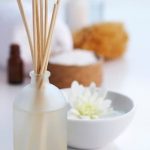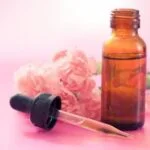Aromatherapy is the practice of using natural plant extracts to promote physical and emotional well-being. Good aromatherapy oils play a crucial role in this holistic healing method, offering a wide range of therapeutic benefits for the body and mind. From stress relief to improved sleep and relaxation, the use of high-quality aromatherapy oils has gained popularity as a natural approach to wellness.
Aromatherapy oils encompass both essential oils and carrier oils, each with its own unique properties and uses. Essential oils are highly concentrated extracts from plants, known for their potent fragrance and therapeutic effects. On the other hand, carrier oils are used to dilute essential oils for safe application on the skin, enhancing their absorption and providing nourishment.
When choosing good aromatherapy oils, it is important to consider factors such as purity, source, and therapeutic properties. The quality of the oil greatly impacts its effectiveness in aromatherapy practices. In this article, we will explore the different types of aromatherapy oils available and provide guidance on selecting the best options for your needs.
Understanding Aromatherapy Oils
Aromatherapy oils are an integral part of aromatherapy practices, offering a natural way to promote physical and emotional well-being. When it comes to understanding aromatherapy oils, it’s important to differentiate between essential oils and carrier oils. Essential oils are highly concentrated plant extracts that capture the plant’s scent and flavor, while carrier oils are neutral base oils used to dilute essential oils for safe skin application.
There is a wide variety of essential oils available, each with its own unique therapeutic properties and aroma. Some popular essential oils include lavender, known for its calming effects; peppermint, which can help relieve headaches and improve mental clarity; and eucalyptus, valued for its respiratory benefits. On the other hand, carrier oils like coconut oil, jojoba oil, and sweet almond oil are often used as a base for creating customized aromatherapy blends tailored to specific skin types or therapeutic purposes.
In aromatherapy practices, essential oils are commonly used in different ways, including inhalation through diffusers, topical application through massage or skincare products, and even ingestion in some cases under the guidance of a qualified professional. Understanding the various applications of good aromatherapy oils is crucial in maximizing their benefits for overall wellness.
It’s also important to note that not all essential oils are suitable for ingestion or direct skin contact without proper dilution. Therefore, it’s essential to know the uses and safety guidelines for each type of oil before incorporating them into your aromatherapy routine.
| Essential Oil | Benefits |
|---|---|
| Lavender | Calming effects |
| Peppermint | Relieves headaches and improves mental clarity |
| Eucalyptus | Respiratory benefits |
Choosing Quality Aromatherapy Oils
When considering good aromatherapy oils, it is essential to prioritize factors such as purity, source, and therapeutic properties. These elements play a significant role in determining the effectiveness and safety of the oils for aromatherapy practices.
Purity of Aromatherapy Oils
Purity is a crucial factor when selecting good aromatherapy oils. High-quality essential oils are pure and free from synthetic additives or contaminants. Look for products that are labeled as 100% pure essential oils to ensure their authenticity and potency. Additionally, reputable brands often provide detailed information about the sourcing and production processes of their essential oils, offering transparency and assurance of purity.
Source of Aromatherapy Oils
The source of aromatherapy oils can greatly impact their quality. Good aromatherapy oils are often sourced from reputable suppliers who adhere to sustainable and ethical practices. Consider the geographical location where the plants used for oil extraction are cultivated, as this can affect the overall quality of the oil. For example, lavender essential oil sourced from regions known for producing high-quality lavender plants may be more desirable due to optimal growing conditions.
Therapeutic Properties of Aromatherapy Oils
Each aromatherapy oil possesses unique therapeutic properties that contribute to its specific benefits. When choosing good aromatherapy oils, consider the intended purpose of their use and select oils that align with those goals. For example, lavender oil is popular for relaxation and stress relief, while eucalyptus oil is known for its invigorating and decongestant properties. Understanding the therapeutic properties of different essential oils can help in creating customized blends tailored to individual needs.
Overall, conducting thorough research on reputable brands, understanding the purity standards of aromatherapy oils, identifying sustainable sources, and recognizing the therapeutic properties will enable individuals to choose good aromatherapy oils suitable for their well-being goals.
Top Essential Oils for Aromatherapy
When it comes to aromatherapy, essential oils play a crucial role in promoting physical and emotional well-being. These highly concentrated plant extracts are known for their therapeutic properties, making them popular choices for various holistic practices. When selecting good aromatherapy oils, it’s important to consider factors such as purity, source, and their specific benefits for different purposes.
Here are some of the top essential oils for aromatherapy and their specific benefits:
1. Lavender Essential Oil: Known for its calming and relaxing properties, lavender essential oil is often used to promote restful sleep and reduce feelings of anxiety and stress. It can also help alleviate headaches and minor skin irritations.
2. Peppermint Essential Oil: With its invigorating scent, peppermint essential oil is commonly used to boost energy levels, improve focus and mental clarity, and relieve symptoms of nausea and respiratory issues.
3. Eucalyptus Essential Oil: This refreshing essential oil has natural decongestant properties, making it a popular choice for alleviating sinus congestion, respiratory infections, and muscle tension relief.
4. Tea Tree Essential Oil: Renowned for its antibacterial and antifungal properties, tea tree essential oil is often used to treat minor skin conditions such as acne, cuts, and insect bites. It can also help boost immunity.
When using these essential oils in aromatherapy practices, it’s important to dilute them properly with high-quality carrier oils to ensure safe application on the skin or through diffusion methods. Additionally, always follow recommended guidelines for each specific essential oil to maximize their therapeutic benefits while minimizing potential side effects.
Carrier Oils for Aromatherapy Blends
When it comes to aromatherapy blends, carrier oils play a crucial role in diluting essential oils and carrying their therapeutic properties to the skin. These base oils are also known for their nourishing and moisturizing effects on the skin, making them an essential component of any aromatherapy regimen. Understanding the different types of carrier oils and their specific benefits can help you choose the right one for your unique needs.
Types of Carrier Oils
There are various carrier oils available, each with its own set of characteristics and properties. For example, jojoba oil is known for its similarity to the skin’s natural sebum, making it suitable for all skin types, including oily and acne-prone skin. On the other hand, sweet almond oil is rich in vitamins and ideal for moisturizing dry or sensitive skin.
Other popular carrier oils include coconut oil, grapeseed oil, avocado oil, and olive oil. It’s essential to consider your skin type and desired therapeutic benefits when selecting a carrier oil for your aromatherapy blends.
Choosing Quality Carrier Oils
Just like essential oils, the quality of carrier oils is crucial for achieving optimal results in aromatherapy. Look for cold-pressed or expeller-pressed carrier oils to ensure that they retain their natural nutrients and properties.
Additionally, organic carrier oils are free from pesticides and synthetic additives, making them a healthier choice for your skin and overall well-being. When purchasing carrier oils, always check the source and manufacturing process to ensure that you are using high-quality products in your aromatherapy practice.
Recommended Carrier Oils for Different Therapeutic Purposes
Depending on your specific needs, certain carrier oils may be more suitable for particular therapeutic purposes. For example, if you’re looking to soothe inflammation or alleviate muscle pain, arnica-infused carrier oils can provide targeted relief when combined with appropriate essential oils.
Similarly, rosehip seed oil is renowned for its anti-aging properties and can be used in aromatherapy blends aimed at promoting skin rejuvenation and regeneration. By understanding the therapeutic benefits of different carrier oils, you can tailor your aromatherapy blends to address specific concerns effectively.
By exploring the role of carrier oils in aromatherapy blends and selecting high-quality options suited to your skin type and therapeutic goals helps maximize the benefits of good aromatherapy oils in your daily wellness routine.
Aromatherapy Oil Safety
Aromatherapy oils are natural and concentrated extracts derived from plants that are used in aromatherapy practices to promote physical and emotional well-being. When using good aromatherapy oils, it is important to understand the safety measures and proper usage guidelines to avoid potential risks and maximize their therapeutic benefits.
One essential aspect of aromatherapy oil safety is understanding dilution ratios. Essential oils are highly concentrated, so they should be diluted with a carrier oil before applying them to the skin. The typical dilution ratio for adults is 2-3 drops of essential oil per teaspoon of carrier oil for massage or topical applications. However, this ratio may vary depending on specific essential oils and individual sensitivities.
In addition to dilution ratios, it’s crucial to be aware of potential side effects associated with certain aromatherapy oils. Some essential oils can cause skin irritation, allergic reactions, or other adverse effects if not used properly. For example, citrus essential oils like lemon or bergamot are photosensitive and can increase the risk of sunburn when applied to the skin before sun exposure. It’s important to research each essential oil’s potential side effects before use.
Sensitive individuals, including pregnant women, children, and those with certain medical conditions, should take extra precautions when using aromatherapy oils. Some essential oils are not recommended for use during pregnancy or around young children due to their potent properties. It’s best to consult with a qualified aromatherapist or healthcare professional for personalized guidance on using aromatherapy oils safely in these cases.
| Aromatherapy Oil Safety | Guidelines |
|---|---|
| Dilution Ratios | Understanding dilution ratios is crucial for safe use |
| Potential Side Effects | Research each essential oil’s potential side effects before use |
| Precautions for Sensitive Individuals | Sensitive individuals need personalized guidance for safe use |
Aromatherapy Oil Diffusion Methods
Aromatherapy oils can be diffused using a variety of methods to enhance their therapeutic effects for physical and emotional well-being. Here are some popular methods for diffusing good aromatherapy oils:
- Inhalation: One of the most common and effective ways to use aromatherapy oils is through inhalation. This can be achieved by adding a few drops of essential oil to a bowl of hot water, using a steam inhaler, or simply inhaling the aroma directly from the bottle. The molecules in the oil travel to the olfactory nerves and stimulate the brain to evoke a specific emotional response.
- Topical Application: Another method for using aromatherapy oils is through topical application. By diluting essential oils with carrier oils, such as coconut or jojoba oil, they can be applied directly to the skin for massage or targeted therapy. This method allows for absorption through the skin and provides localized relief for various ailments.
- Using Diffusers: A popular way to diffuse aromatherapy oils at home or in spa settings is by using diffusers. These devices disperse essential oils into the air in the form of a fine mist, allowing for easy inhalation and creating a calming ambiance. Different types of diffusers include ultrasonic, nebulizing, heat-based, and evaporative diffusers.
When utilizing these methods, it’s important to consider safety precautions such as proper dilution ratios and potential sensitivities. Proper diffusion of good aromatherapy oils can promote relaxation, improve mood, alleviate stress, and support overall well-being. Whether you prefer inhalation, topical application, or diffuser use, incorporating aromatherapy oils into your daily routine can provide significant physical and emotional benefits.
DIY Aromatherapy Oil Blends
In conclusion, incorporating good aromatherapy oils into your daily wellness routine can have a profound impact on both your physical and emotional well-being. The therapeutic benefits of essential oils for aromatherapy are well-documented, and choosing high-quality oils is crucial to maximize their effectiveness. When selecting aromatherapy oils, it’s important to consider factors such as purity, source, and therapeutic properties to ensure that you are using the best possible options for your needs.
Whether you are seeking relaxation, stress relief, or an overall sense of well-being, there are numerous essential oils that can support these goals. From the calming effects of lavender to the invigorating scent of peppermint and eucalyptus, there is a wide range of good aromatherapy oils to choose from. Additionally, when creating DIY aromatherapy oil blends, it’s essential to select quality carrier oils that complement the therapeutic properties of the essential oils and cater to different skin types.
It’s also important to keep in mind the safety aspects of using aromatherapy oils. Dilution ratios should be followed carefully to prevent any potential side effects, especially for sensitive individuals. Lastly, exploring different diffusion methods such as inhalation or topical application can further enhance the benefits of good aromatherapy oils. By incorporating these tips and recipes into your aromatherapy practice, you can experience the full potential of these natural remedies for promoting holistic wellness.

Are you looking for a natural way to improve your health and wellbeing?
If so, aromatherapy may be the answer for you.





